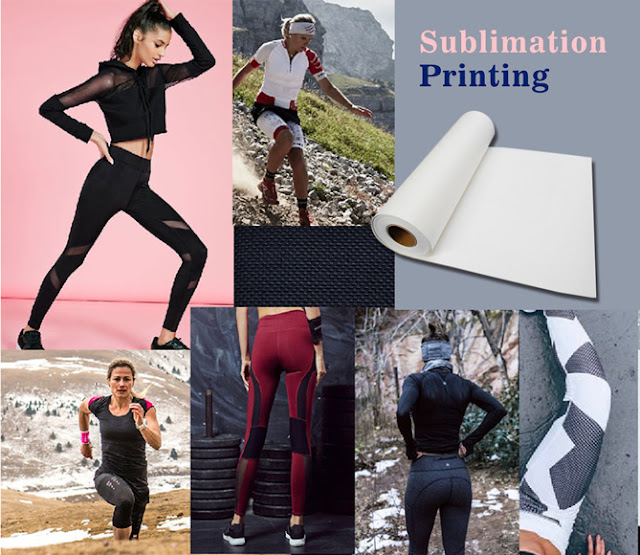Do You Know the Whole Process of Dye Sublimation Printing?
As the industry evolved, many types of printing processes emerged, each providing its own unique benefits. Dye sublimation printing is one of the most widely used forms of printing, especially for commercial usage. Now let's take a look at the whole process of dye sublimation printing.
Dye sublimation printing has always been chosen for its high-quality photographic images. This process uses thermal heat to transfer different amount of colorized dye pigments from a film or carrier ribbon to a printing surface where the dyes are attached through chemical bonding.
Placed inside the printer is a rolled transparent film which has a repeating pattern of yellow, magenta, cyan, black, and white panels. These panels contain dyes that are sensitive to thermal energy in relation to the basic colors utilized in subtractive printing.
The combination of varying amounts of dyes allows for the creation of any color in the spectrum. All the way from white (absence of any dye transfer) to black (complete transfer of all three dyes).
The thermal printing process also makes use of the clear and black panels but in a slightly different way known as “mass transfer”. In this method, a plastic resin is transferred (rather than a dye) when the right temperatures are reached on the carrier ribbon. The black resin is used for applying barcodes and text on the colored image whereas the white (or clear) panel is used to apply a protective coat over the printed images.
A print-head with hundreds of different heater elements is utilized by the thermal printing process to transfer different amounts of colored dyes onto the printing paper. Each individual heater is controlled separately by software in order to enhance the picture quality.
In case of the colored panels, varying temperatures are used on different colors to vaporize the desired quantity of dye and to permeate the glossy card surface where it is bonded onto the plastic surface.
Because sublimation causes the powdery dye to turn from a solid state directly to a gaseous state, there is little or no mess when compared with inkjet printers. Also, because the dye is infused onto the surface, it is less prone to distorting and fading over time.
Today's article is shared here. We Nanjing Fei Yue Digital is a company specializing in thermal transfer printing equipment. If you are interested in our products, welcome to contact us at any time. We will provide you the best quality product and service. Thanks for your reading.
Dye sublimation printing has always been chosen for its high-quality photographic images. This process uses thermal heat to transfer different amount of colorized dye pigments from a film or carrier ribbon to a printing surface where the dyes are attached through chemical bonding.
Placed inside the printer is a rolled transparent film which has a repeating pattern of yellow, magenta, cyan, black, and white panels. These panels contain dyes that are sensitive to thermal energy in relation to the basic colors utilized in subtractive printing.
The combination of varying amounts of dyes allows for the creation of any color in the spectrum. All the way from white (absence of any dye transfer) to black (complete transfer of all three dyes).
The thermal printing process also makes use of the clear and black panels but in a slightly different way known as “mass transfer”. In this method, a plastic resin is transferred (rather than a dye) when the right temperatures are reached on the carrier ribbon. The black resin is used for applying barcodes and text on the colored image whereas the white (or clear) panel is used to apply a protective coat over the printed images.
A print-head with hundreds of different heater elements is utilized by the thermal printing process to transfer different amounts of colored dyes onto the printing paper. Each individual heater is controlled separately by software in order to enhance the picture quality.
In case of the colored panels, varying temperatures are used on different colors to vaporize the desired quantity of dye and to permeate the glossy card surface where it is bonded onto the plastic surface.
Because sublimation causes the powdery dye to turn from a solid state directly to a gaseous state, there is little or no mess when compared with inkjet printers. Also, because the dye is infused onto the surface, it is less prone to distorting and fading over time.
Today's article is shared here. We Nanjing Fei Yue Digital is a company specializing in thermal transfer printing equipment. If you are interested in our products, welcome to contact us at any time. We will provide you the best quality product and service. Thanks for your reading.





评论
发表评论